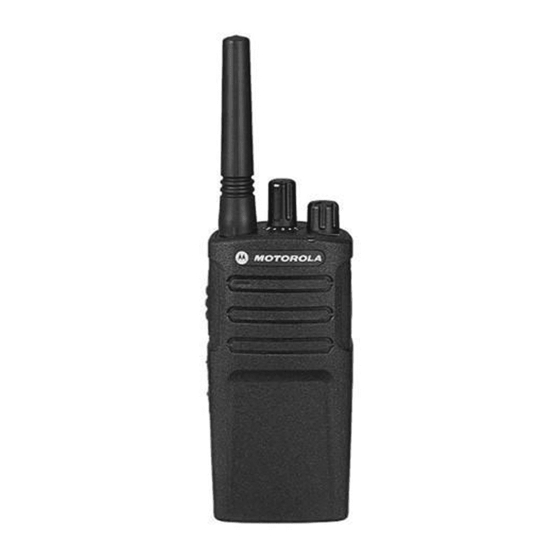- ページ 12
双方向ラジオ Motorola XT420のPDF ユーザーマニュアルをオンラインで閲覧またはダウンロードできます。Motorola XT420 18 ページ。 Non-display model
Motorola XT420 にも: ユーザーマニュアル (18 ページ)

TALK RANGE
XT Series radios have been designed to maximize
performance and improve transmission range in the field. It
is recommended that you do no use the radios closer than
1.5 meters apart, to avoid interference. XT420 coverage is
16.250 square meters, 13 floors and 9 KM in flat areas.
Talk range depends on the terrain. It will be affected by
concrete structures, heavy foliage and by operating radios
indoors or in vehicles. Optimal range occurs in flat, open
areas with up to 9 kilometers of coverage. Medium range
occurs when buildings and trees are in the way. Minimal
range occurs when dense foliage and mountains obstruct
the communication path. To establish a proper two-way
communication, the Channel, Frequency and Interference
Eliminator Codes must be the same on both radios. This
depends on the stored profile that has been pre-
programmed on the radio:
1.
Channel: Current channel that the radio is using, depending
upon radio model.
2.
Frequency: The frequency the radio uses to transmit/
receive.
3.
Interference Eliminator Code: These codes help minimize
interference by providing a choice of code combinations.
4.
Scramble Code: Codes that make the transmissions sound
garbled to anyone listening who is not set to that specific
code.
5.
Bandwidth: Some frequencies have selectable channel
spacing, which must match other radios for optimum audio
quality.
For details of how to set up frequencies and CTCSS/DPL
codes in the channels, refer to "Programming Features" on
page 14
Note:
Interference Eliminator Codes are referred also as
CTCSS/DPL codes or PL/DPL codes
11
English
